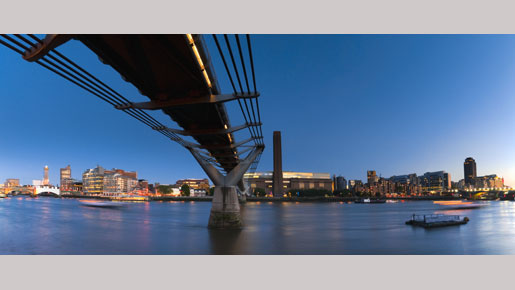
Walk into any lobby in London’s financial heart and the change is clear: the City’s giants have dropped the Old Masters and are embracing contemporary art instead in the battle to impress clients and inspire employees.
Ditching Thames landscapes, London’s powerhouses have developed a taste for cutting-edge work, collecting emerging artists, often on modest budgets, as the corporate focus shifts from promoting gravitas to portraying a bold, fresh outlook.
Many now own world-class collections, with Deutsche Bank, for example, showing off works that stretch from a Damien Hirst and an Anish Kapoor in its London lobby to R.B. Kitaj, Bridget Riley and Lucian Freud in the meeting rooms upstairs.
The shift to contemporary art has also run parallel to a need to bring corporate collections into the company structure – to reflect the brand, and contain the cost. Where in the past, pieces were often accumulated by enthusiastic executives whose spending could run into millions, the average amount now spent on pieces of art is closer to £10,000 – £20,000.
Collections are also professionally handled, with items more often than not picked by freelance curators or outside advisers. “It is about competition and it’s about showing they are sophisticated and modern,” said Prue O’Day, a director of independent art adviser Anderson O’Day, who has worked with dozens of corporate clients from Ernst & Young to WestLB.
“London is a cultural mecca and that has really affected the way people view everything. To say nothing of the drip effect of the Tate Modern and the Frieze art fair,” she says. “And of course, we are a much more visual culture now.”
Wealthy bankers and industrialists have long flirted with the arts – from Britain’s Henry Tate to US coke and steel magnate Henry Clay Frick and David Rockefeller at Chase Manhattan Bank – passionate patrons who amassed some of the world’s most important art collections.
But the culture of enlightened investments of passion largely ended after the excesses of the 1980s, which famously saw a Japanese insurance magnate snap up one of Vincent Van Gogh’s “Sunflowers” paintings for a record £25m.
The aim now, companies say, is to engage the wider community, using art committees and professional curators. “Businesses have become more outward-looking. They have been forced to keep in touch with generation X, generation Y,” said Chris Turner, chairman of the London arts committee at law firm Clifford Chance, referring to people born after the 1960s.
“We see art as connecting us with new ideas, artists representing the new generation. It is very easy in some professions to get a bit remote from what is going on.”
The taste for the contemporary has boosted firms’ appetites to promote up-and-coming artists, often sponsoring exhibitions and prizes as well as buying their work. HSBC launched a cultural sponsorship programme last year and runs cultural art exchanges, reinforcing its brand as a local bank.
They hope these will inspire clients and employees, who are offered twilight tours, lectures and studio visits.
“They want to convey the impression to clients, customers, but also to their employees, that this is an attractive place to work,” said Colin Tweedy, head of creative network Arts & Business.
“Solid rows of computer screens is not a good way of getting the best out of people.”
Deutsche Bank – whose works include striking sketches by Kitaj and an arresting Francis Bacon lithograph based on his portrait of Pope Innocent X – spends an average of under £1,000 per item for its collection of post-1960 works on paper.
Even then, every purchase is vetted by an art committee. “It is not a museum we are buying for, it is an active business,” said Alistair Hicks, art adviser at the bank.
O’Day added: “They don’t necessarily see it as an investment. It’s an investment in terms of bringing energy into the building and making people look – and look twice.”
But the daring approach can help firms attract clients as wider interest in art investment grows.
And in a downturn, more restrained spending allows most companies to keep their initiatives going – though they walk a delicate line as jobs are cut and budgets shrink.
Collectors, curators and advisers alike say the market is unlikely to remain immune to a faltering economy, as many major corporate commissions are linked to property moves such as new headquarters or big projects like Heathrow’s Terminal 5, which includes a large commission by British artists Langlands & Bell.
But most have yet to feel the impact. And the credit crunch will not kill the taste for art.
“Obviously they are not going to go on a massive spending spree,” said Tweedy. “If you are laying off large numbers of staff the last thing you want to do is be seen to be spending your money unwisely.
“But no-one now (tells) a bank, or any business, that engaging in the arts is a ‘waste of money’ or ‘corporate theft’, as it would have been called in the Thatcher years. It is simply good business, and the employees like it.”
But budgets will tighten further.
“We are not in an ivory tower,” said Deutsche Bank’s Hicks.
“When it comes to arguing our case for our budget, if markets are tough we are less likely to succeed. But if the market is down, we can also buy more for the same money.”

